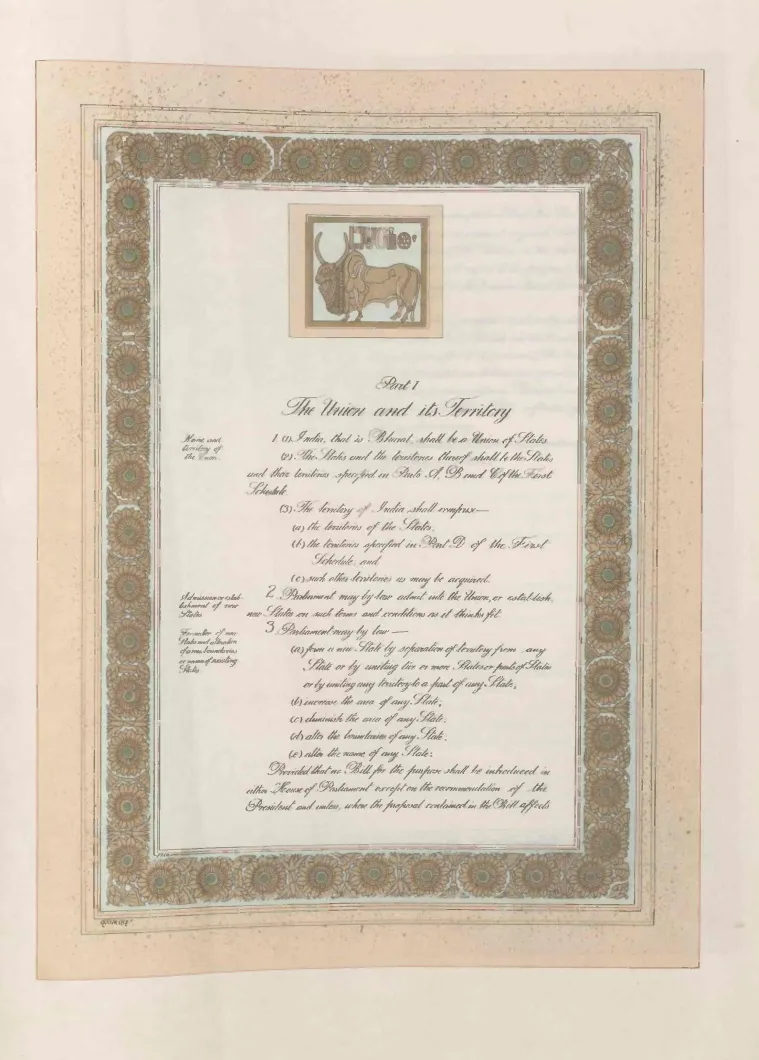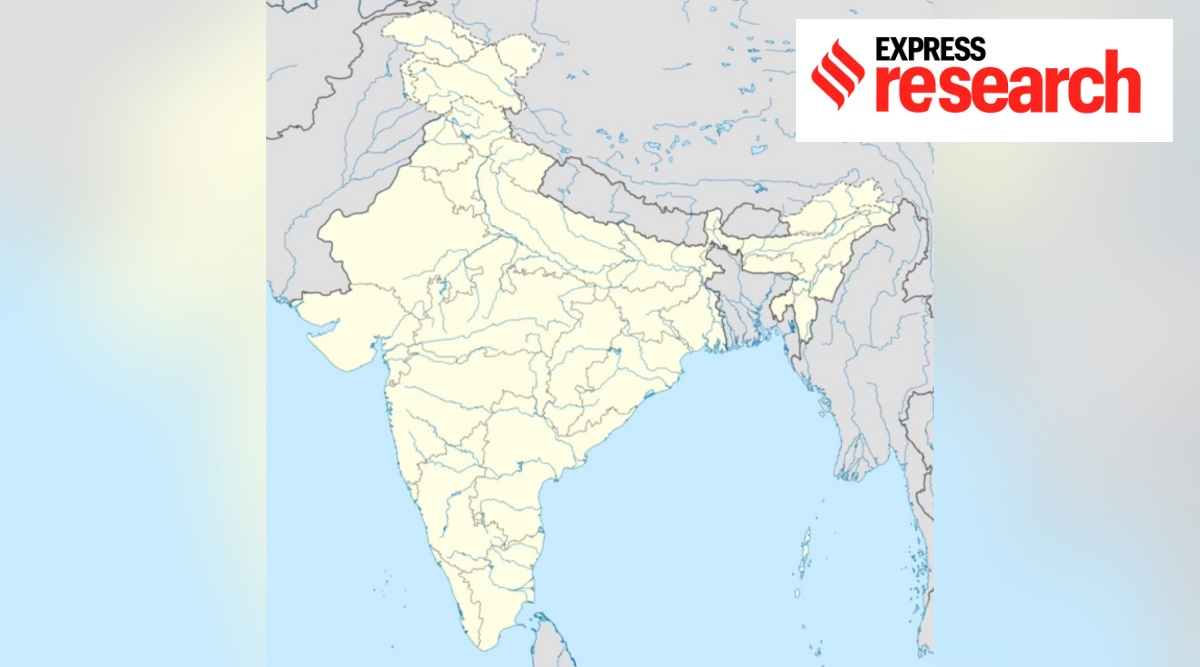What must be the official name of the Indian subcontinent was an issue that was most fiercely debated by members of the Constituent Assembly while drafting the Constitution of India. The first prime minister of India, Jawaharlal Nehru, while writing his book The Discovery of India had paid attention to the multiple names associated with India. “Often, as I wandered from meeting to meeting, I spoke to my audiences of this India of ours, of Hindustan and of Bharata, the old Sanskrit name derived from the mythical founders of the race, ” Nehru wrote. Yet, when the Constitution finally came into effect in 1951 its first Article dropped one of the three names that Nehru had identified with the country, as it read — “India, that is Bharat, shall be a Union of states”.
In the subsequent years, the naming of India came under controversy on more than one occasion. Further, India and Bharat were hardly the only names that had historically been associated with the subcontinent. Scholars have pointed out that one of the oldest names used in association with the Indian subcontinent was Meluha, which was mentioned in the texts of ancient Mesopotamia in the third millennium BCE, to refer to the Indus Valley Civilisation. But Meluha had lost currency much before modern political systems developed in the region.
 Also Read | From Meluha to Hindustan, the many names of India and Bharat
Also Read | From Meluha to Hindustan, the many names of India and Bharat
Jambudvipa, Nabhivarsa, and Aryavarta were the other names associated with India. A most common name coined for the territory, mainly by the Persians, was Hindustan. Yet in official correspondence, India and Bharat is what stuck on.
The history of the names Bharat and India
The earliest recorded name that continues to be debated is believed to be ‘Bharat’, ‘Bharata’, or ‘Bharatvarsha’, that is also one of the two names prescribed by the Indian Constitution. While its roots are traced to Puranic literature, and to the Hindu epic, Mahabharata, the name’s popularity in modern times is also due to its sustained usage during the freedom struggle in slogans such as ‘Bharat Mata ki Jai’.
The social scientist Catherine Clémentin-Ojha, in her article, India, that is Bharat…’: One Country, Two Names writes that ‘Bharata’ refers to the “supraregional and subcontinental territory where the Brahmanical system of society prevails”. Geographically, the Puranas mentioned Bharata to be situated between the ‘sea in the south and the abode of snow in the north’. Its shape and dimensions varied across different ancient texts. In that sense, Bharata, as explained by Ojha, was more of a religious and socio-cultural entity, rather than a political or a geographical one. Yet, on another note, Bharata is also believed to be the mythical founder of the race.
Also read | ‘President of Bharat’: Invite for G20 dinner at Rashtrapati Bhavan sparks row
But it was the name ‘Hindustan’ that was the case of the first nomenclature carrying political undertones. It was first used when the Persians occupied the Indus valley in the seventh century BCE. Hindu was the Persianised version of the Sanskrit Sindhu, or the Indus river, and was used to identify the lower Indus basin. From the first century of the Christian era, the Persian suffix, ‘stan’ was applied to form the name ‘Hindustan’.
At the same time, the Greeks who had acquired knowledge of ‘Hind’ from the Persians, transliterated it as ‘Indus’, and by the time the Macedonian ruler Alexander invaded India in the third century BCE, ‘India’ had come to be identified with the region beyond the Indus.
Also Read | Oppn coalition for 2024 polls to be named INDIA — Indian National Developmental Inclusive Alliance
By the 16th century, the name ‘Hindustan’ was used by most South Asians to describe their homeland. Historian Ian J. Barrow in his article, From Hindustan to India: Naming change in changing names, writes that “in the mid-to-late eighteenth century, Hindustan often referred to the territories of the Mughal emperor, which comprised much of South Asia.” However, from the late 18th century onwards, British maps increasingly began using the term ‘India’, and ‘Hindustan’ started to lose its association with all of South Asia.
“Part of the appeal of the term India may have been its Graeco-Roman associations, its long history of use in Europe, and its adoption by scientific and bureaucratic organisations such as the Survey of India,” writes Barrow. “The adoption of India suggests how colonial nomenclature signalled changes in perspectives and helped to usher in an understanding of the subcontinent as a single, bounded and British political territory,” he adds.
Naming India in the Constitution
During the Constituent Assembly debates the section ‘Name and territory of the Union’ was taken up for discussion on September 17, 1949. Right from the moment the first article was read out as ‘India, that is Bharat shall be a union of states’, a division arose among the delegates.
 Right from the moment the first article was read out as ‘India, that is Bharat shall be a union of states’, a division arose among the delegates. (Source: wikisource.org)
Right from the moment the first article was read out as ‘India, that is Bharat shall be a union of states’, a division arose among the delegates. (Source: wikisource.org)
Hari Vishnu Kamath, a member of the Forward Bloc suggested that the first article be replaced as ‘Bharat, or in the English language, India, shall be and such.’ Seth Govind Das, representing the Central Provinces and Berar, on the other hand, proposed: “Bharat known as India also in foreign countries”. Hargovind Pant, who represented the hill districts of the United Provinces, made it clear that the people of Northern India, ‘wanted Bharatvarsha and nothing else’.
Most Read 1Chandrayaan-3 mission: Dawn breaks on Moon, all eyes on lander, rover to wake up 2As Indo-Canadian relations sour, anxiety grips Indian students, residents who wish to settle in Canada 3Karan Johar says Sanjay Leela Bhansali did not call him after Rocky Aur Rani: ‘He’s never called me but…’ 4Gadar 2 box office collection day 40: Hit by Shah Rukh Khan’s Jawan onslaught, Sunny Deol movie ends BO run with Rs 45 lakh earning 5Shubh’s tour in India cancelled: Why is the Canada-based singer facing the music?Also Read | Express View on I-N-D-I-A: The Opposition’s position
Pant made his argument in the following words: “So far as the word ‘India’ is concerned, the Members seem to have, and really I fail to understand why, some attachment for it. We must know that this name was given to our country by foreigners who, having heard of the riches of this land, were tempted towards it and had robbed us of our freedom in order to acquire the wealth of our country. If we, even then, cling to the word ‘India’, it would only show that we are not ashamed of having this insulting word which has been imposed on us by alien rulers.”
Also Read | The handcrafted Constitution is a work of art
None of the suggestions were accepted by the committee. However, as Ojha, points out in her article, they “illustrated contrasting visions of the budding nation’.
Also ReadThe many arguments for, and against, abortion rights How Lord Ganesha is celebrated outside IndiaKashmir when India got independence: Neither here nor thereHow Thakurs have dominated UP politics since Independence
It is worth noting though, that ‘Hindustan’ was hardly a contender in the debates. “Hindustan received different treatments during the constituent assembly,” writes Ojha. She adds that “three names had been at the start of the race, but at the end two had been placed on equal footing and one dropped.”


